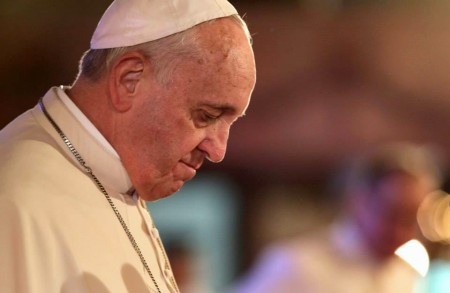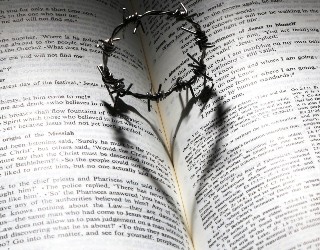 Hi readers, it seems you use Catholic Online a lot; that's great! It's a little awkward to ask, but we need your help. If you have already donated, we sincerely thank you. We're not salespeople, but we depend on donations averaging $14.76 and fewer than 1% of readers give. If you donate just $5.00, the price of your coffee, Catholic Online School could keep thriving. Thank you. Help Now >
Hi readers, it seems you use Catholic Online a lot; that's great! It's a little awkward to ask, but we need your help. If you have already donated, we sincerely thank you. We're not salespeople, but we depend on donations averaging $14.76 and fewer than 1% of readers give. If you donate just $5.00, the price of your coffee, Catholic Online School could keep thriving. Thank you. Help Now >
The Divine Mercy Devotion and Praying the Fatima Chaplet
FREE Catholic Classes
The Divine Mercy prayer is Eucharistic and concerns the Father and the Son while the Fatima prayers are a bit more Eucharistic and decidedly Trinitarian. This Trinitarian focus reflects our central belief. According to the Catechism of the Catholic Church the "Trinity is the central mystery of our faith and life."(234)
Highlights
Catholic Online (https://www.catholic.org)
10/13/2011 (1 decade ago)
Published in Living Faith
Keywords: Fatima, Chaplet, Eucharistic, Trinity, Divine Mercy, Greg Wasson
P>ALEXANDRIA, LA (Catholic Online) - Within three years of first reciting the Fatima prayers, two of the shepherd children achieved the heights of sanctity. They died as children and were beatified in May 2000 by John Paul II. Of course, they did not only say the Fatima prayers. They prayed the Rosary as well and made many sacrifices for sinners as called for by Mary. But, the Fatima prayers were a crucial part of the "program" Mary laid out for them.
It is a mystery as to why these prayers have been overlooked for so long. Perhaps it was because of the emphases on the Rosary and that the Fatima prayers had no context or framework within which to recite them. You could say them a few times for a little while, but this way has obviously not caught on. Many people need some structure, especially in their prayer life, which is what a Chaplet of the Fatima Prayers would provide.
The Divine Mercy Devotion, which has some strong similarities with the Fatima Program, can provide a logical template on which to build a Chaplet:
We say on the large (rosary) bead of the Divine Mercy Chaplet:
Eternal Father, I offer you the body and blood, soul and Divinity
of your dearly beloved Son, Our Lord Jesus Christ, in atonement
for our sins and those of the whole world.
The second prayer the Angel taught the children of Fatima was:
O Most Holy Trinity, I adore you profoundly. I offer you the
most precious body, blood, soul and Divinity of Jesus Christ
present in all the tabernacles of the world, in reparation for
the outrages, sacrileges and indifferences by which he is
offended. And through the infinite merits of his most Sacred
Heart, and the Immaculate Heart of Mary, I beg the conversion
of sinners.
The similarity between the two prayers is clear. Eucharistic offering is at the core of both prayers as is "atonement for" and "reparation for" sinners. There is no need to explain all the details of each prayer; one can intuitively grasp the essential similarity. This Fatima prayer should be said on the large bead.
On the small beads of the Divine Mercy Chaplet we say:
For the sake of his sorrowful Passion, have mercy on us
and on the whole world.
This was first prayer taught by the angel to the children:
My God, I believe, I adore, I hope[in], and I love you and I
beg pardon for all those who do not believe, do not adore,
do not hope[in] and do not love you.
The Divine Mercy prayer asks for mercy for the whole world. The Fatima prayer begs pardon for all (offenders). This Fatima prayer should be said on the small beads.
The Divine Mercy Chaplet ends with a triple ejaculatory prayer said on the last three small beads:
Holy God, Holy Mighty One, Holy Immortal one, have
mercy on us and on the whole world.
Mary taught the children this ejaculatory prayer:
Most Holy Trinity, I adore you. My God, My God, I love
you in the most Blessed Sacrament.
Repeated 3 times, this is the final Fatima prayer said on the last three beads.
The two Chaplets are not exactly alike. There are significant differences, besides the common themes I have shown. I did not intend to show that the two were exactly the same, only that by following the Divine Mercy Chaplet as a template it would be reasonable to organize the Fatima prayers into the same framework.
Another likeness between the Divine Mercy Devotion and the Fatima Program is the important place it gives to an image. The "Jesus, I trust in you" picture is comparable, within each ones context, to the "Last Vision of Fatima." Both were intended to foster meditation.
You have already noticed the differences between the two sets of chaplet prayers. Divine Mercy is Eucharistic and concerns the Father and the Son while the Fatima prayers are a bit more Eucharistic and decidedly Trinitarian. This Trinitarian focus reflects our central belief. According to the Catechism of the Catholic Church the "Trinity is the central mystery of our faith and life."(234)
St. Augustine prescribes reflections on the Trinity as a method of spiritual growth (Book VII, Chapter 4, De Trinitate). He exhorts the "average" man to activate within himself the image of the divine Trinity:
"Until a man is purified..he must just believe in the Father and the Son and the Holy Spirit, One only God..and when he hears the Father called God he must not exclude the Son and the Holy Spirit from that title; so when we hear the Son called the only God we must accept it without in any way excluding the Father and the Holy Spirit. And this man must also say one being, in order to avoid thinking that one is greater or better than another or in any way different" [except for the distinction of persons].
The importance of such a Trinitarian approach to the spiritual life cannot be underestimated. Pope John Paul II in an audience with Austrian Bishops told them, "your first duty as pastors is not projects and organizations, but to lead your people to a deep intimacy with the Trinity" (Dubay, Deep Conversion/Deep Prayer p. 5). This is exactly what Our Blessed Mother is doing with the Fatima program. You can see this if you look at the whole and not just pieces.
St. Teresa of Avila, a Doctor of the Church, attributes a central role to the Trinity in the spiritual life. She teaches that entrance into the seventh and final "mansion" in her schema is prompted by an "intellectual" vision of the Trinity:
"It sees three persons individually and yet a wonderful kind of knowledge is given the soul as it realizes most certainly and truly that these three persons are one Substance and one Power and one Knowledge and one God alone."
Teresa considers this "intellectual" vision to be the dawning of the beatific vision of heaven.
I contend that the mystery of the Fatima Prayers, with their uncommon concentration on the Trinity, taken together (Chaplet) are a method to practice Augustine's Trinitarian directives and eventually arrive at the "intellectual" vision of the Trinity described by Teresa.
Indeed, Lucia, the third of the Fatima children at age 22, was actually praying the Fatima prayers when she experienced a vision of the Holy Trinity (The Last Vision of Fatima):
"I understood that it was the Mystery of the Holy Trinity which was shown me and I received lights about this mystery which I am not permitted to reveal." (Apostoli, Fatima for Today p.159-60)
According to St. Teresa these visions of the Trinity are intellectual (interior) only. Lucia's vision was interior ("I received lights") but obviously had an imaginary component (picture). But this can be considered an "extraordinary" favor not so much for Lucia, but for those of us who follow after her on this way.
The prayers of Fatima are not solely Trinitarian however; they are also strongly Eucharistic. Benedict XVI reveals the relationship between the Eucharist and the Trinity in his Apostolic Exhortation Sacramentum Caritatis:
"The Eucharist reveals the loving plan that guides all salvation. There the Trinitarian God, who is essentially love, becomes fully part of our human condition. In the bread and wine under whose appearances Christ gives himself to us in the paschal meal God's whole life encounters us and is sacramentally shared with us. God is a perfect communion of love between Father, Son and Holy Spirit. The "mystery of faith" is thus a mystery of Trinitarian love, a mystery in which we are called by grace to participate."
---
'Help Give every Student and Teacher FREE resources for a world-class Moral Catholic Education'
Copyright 2021 - Distributed by Catholic Online









 Daily Readings for Friday, April 19, 2024
Daily Readings for Friday, April 19, 2024 St. Alphege: Saint of the Day for Friday, April 19, 2024
St. Alphege: Saint of the Day for Friday, April 19, 2024 Stewardship Prayer: Prayer of the Day for Friday, April 19, 2024
Stewardship Prayer: Prayer of the Day for Friday, April 19, 2024
